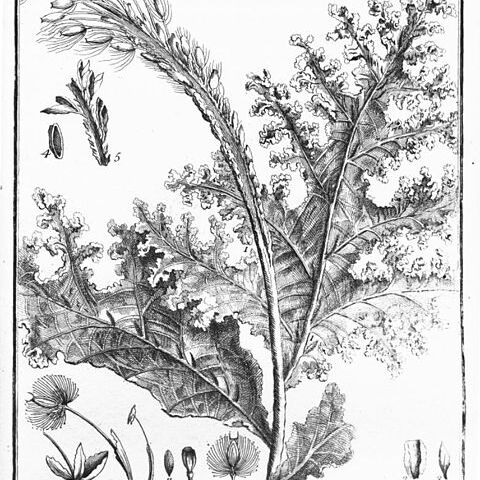Submerged aquatic herbs resembling mosses or lichens. Roots thallus-or ribbon-like, creeping, attached to rocks by expanded haustoria or holdfasts. Stems erect (or near-absent, not in Australia). Leaves alternate, whorled or pseudo-whorled, entire to divided, close-set and overlapping. Inflorescences diverse. Flowers actinomorphic or zygomorphic, bisexual, sessile or shortly pedicellate, solitary (or fascicled, not in Australia), in bud enveloped by leaves or bracts or enclosed in a spathella which ruptures as the pedicel elongates. Tepals 2 or 3 (to many, not in Australia). Stamens 1–3 (to many, not in Australia); anthers 2-locular, dehiscing longitudinally. Ovary superior, with 2 or 3 (1, not in Australia) locules and axile placentation; ovules many (to 2, not in Australia), anatropous; styles 2 or 3 (1, not in Australia), free or partly united; stigmas simple to expanded-laciniate. Fruit a ribbed capsule, dehiscing septicidally. Seeds many (2–several, not in Australia), without endosperm; embryo straight.
Herbs, [annual] perennial, aquatic, attached to rocks and other solid substrata in rapids and waterfalls, submersed in vegetative stage, becoming reproductive as water level drops, exposing plants to air. Roots prostrate, elongate, root cap asymmetric. Stems often trailing in connate basally; stamens [1–]2[–many], [1–2-whorled or incompletely 1-whorled] restricted to 1 side of flower; filaments arising from andropodium [individually, not from andropodium], distinct or connate basally; ovary 2[or 3]-carpellate; stigmas 2[or 3], apical. Fruits capsular, 2-valved [3-valved in Tristicha], [valves persistent] 1 valve falling away after dehiscence. Seeds 0–40[–numerous] per capsule, orange-brown, minute, ovoid, outer integument expanded and sticky when wet.
Herbs, annual or perennial, aquatic. Roots usually flattened, thalloid or filiform. Leaves distichous, scattered, or imbricate, base often sheathed, margin entire or dissected. Flowers bisexual, solitary, actinomorphic or zygomorphic, enclosed or not by a spathella or spathella lacking. Tepals 2-5, free or ± connate. Stamens 1-4, hypogynous; filaments free or partially connate; anthers 2-4-loculed, longitudinally or irregularly dehiscent. Ovary superior, 2-or 3-loculed; ovules numerous, placenta central. Styles 2 or 3. Fruit a septicidal capsule. Seeds numerous, minute, without endosperm.
Plants of this family are moss-like freshwater herbs, almost always found in swift-flowing, permanent rivers, usually in turbulent waters of cataracts and waterfalls, or in continuous water-spray, often firmly fixed to rocks by a lichen-like thalloid basal part. Submerged and often annual the plants flower as they become exposed to air when water levels recede. Pollination is usually by insects, or by wind. Fruits develop rapidly after pollination. The seed coat is mucilaginous when wet and adheres to the substrate where it germinates
Flower hermaphrodite, small, actinomorphic or zygomorphic, without a spathella, or with a persistent membranous spathella (2 spathaceous bracts); spathella at first encloses the flower-bud and at anthesis tears irregularly at the apex allowing the pedicel to elongate bearing the flower erect beyond the spathella; flower-bud subtended by 2–3 free protecting bracts, or flower-bud at first inverted (reflexed) within a membranous spathella (also erect within the spathella outside the Flora Zambesiaca area)
Leaves linear to filiform or reduced and scale-like (moss-like); linear leaves floating, entire or dichotomously, pinnately or laciniately divided, exstipulate or sometimes with 2 tooth-like stipules; scale-like leaves when present 3-ranked (tristichous) or 2-ranked (distichous), scattered or absent on the stems, and ± densely imbricate on branches and flowering shoots
Ovary sessile or on a gynophore, globose to ellipsoid, 1–2 or 3-locular with locules of equal or unequal size; locules ellipsoid to fusiform or subglobose, 2-lobed or not, placentation central or axile, bearing numerous anatropous ovules; styles 2 or 3, sessile or subsessile, usually free, variable in shape
Perianth 3-phyllous or rudimentary and then usually of 2 minute more or less subulate tepals in which case the flower is enclosed (and often inverted) within a spathaceous bract (spathella) which ruptures irregularly on emergence of the flower
Capsule brown, spherical to ellipsoid or fusiform, smooth or adorned with ± wide longitudinal ribs, dehiscing in dry air into 2–3 equal and sometimes caducous valves, or 2 unequal valves of which only the smaller is caducous
Submerged freshwater herbs, firmly attached to rocks and stones in swift-flowing water or spray of waterfalls, often resembling mosses, liverworts or algae, habit also adapting to depth of water and receding water levels
Stamens 1–2 (rarely 3 or 4), filaments free or connate at the base; anthers 4-locular, opening lengthwise; staminode inserted between 2 stamens in Stonesia; pollen-grains solitary or geminate
Perianth of 3 segments (tepals) connate in their lower part, or perianth reduced to 2 minute free filiform structures, lateral to, and shorter than, the androecium, or perianth absent
Stamens hypogynous, 1 or 2 with filaments connate for at least one-third of their length; anthers 2-locular, dehiscing introrsely by a longitudinal slit
Stems simple or with abbreviated side shoots, leafless to ± densely leafy, and/or with reduced leaflets on flowering branches, or stems suppressed
Plant base usually thalloid, variable in form and bearing endogenous buds on the margins and surface from which flowering shoots and stems arise
Shoots (when present) arising from a thalloid base and bearing simple or deeply divided, alternate, exstipulate or minutely stipulate leaves
Seeds reddish-brown to blackish, minute, slightly flattened-ellipsoid to ovoid, exalbuminous; testa reticulate; embryo straight
Ovary sessile or shortly stipitate, of 2–3 united carpels, 1–3-locular; stigmas 1–3; ovules numerous on axile placentas
Plant-body often reduced to a thallus usually attached to the substratum by haptera
Aquatic herbs of rocks or stones in swift-flowing water or spray of waterfalls
Flowers solitary or cymose, bracteate, hypogynous, zygomorphic
Fruit a septicidal capsule
Seeds minute, exalbuminous

